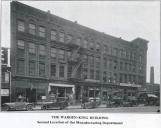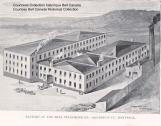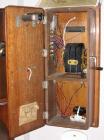14
Telegraph Cable - UnderseaCirca 1882
North Atlantic - Valentia Island Ireland
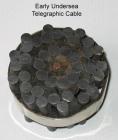 Credits:
Credits:Donald Beauprie
Mark Steadman, Porthcurno Telegraph Museum, Penzance, UK
15
Mr. Howell recalls that the first 100 magneto telephone sets were manufactured by an original staff of seven men and a boy in the Garth Building where it occupied two floors.The company suffered a major loss when a fire struck the building. Nevertheless, it was repaired and business continued till these premises were soon too small for the expanding business. In 1886 they moved to the Warden-King building further west on Craig Street where they occupied four floors. The facade of this building still exists today, it is incorporated in Montreal's Palais des congrès.
18
In 1886 an ice jam was formed on the St. Lawrence river which caused a major flood that affected the lower town. The Warden-King Building wasn't spared and all telephone equipment stored in the cellar and on the first floor was damaged by the water. The magneto sets had to be disassembled, cleaned and in some cases the magneto coils had to be rewound.20
The shop quickly outgrew its premises again and the BTCo had a proper manufacturing complex of five buildings erected in 1890 on Aqueduct street (now Lucien-L'Allier) in Montreal.It's in this location that saw the birth of Northern Electric and Manufacturing Co. in 1895. Mr. Howell recalled "We didn't know anything about the change till one morning we came down as usual at 7:30, and found the name plate on the door had changed from The Bell Telephone Company to the Northern Electric and Manufacturing Company."
He was in charge of winding and magnet wire insulation from 1890 till 1899 when he became general foreman of the same department for the Bell owned Wire and Cable Company at the Beaver Hall Hill plant and later at the Guy and St. James Streets Plant. Mr. Howell retired in 1928 after 45 years service.
21
Aqueduct Then and Now1900 - 2007
Montréal, Québec, Canada
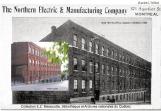 Credits:
Credits:Bibliothèque et Archives nationales du Québec
Ken Lyons
22
The Aqueduct plant had a large wood shop, foundry, machine shop, plating shop and coil winding shops. Its wood shop produced cabinets for phones, switchboards and of course manufactured the crossarms and pins to carry the wires. In those early days most manufacturing was vertically integrated, they made virtually all of their parts. It employed both men and women it their shops, records show women employed as early as 1905. Women appeared to be mostly employed in the insulation of magnet wires and winding coils.It's interesting to note this first Northern Electric building still exists. It was used as a temporary hospital,after it was vacated by Northern Electric, during the Spanish influenza epidemic of 1918.
23
317AH Wall Mounted TelephoneCirca 1910
Throughout Canada
 Credits:
Credits:Telecommunications Museum
Ken Lyons
